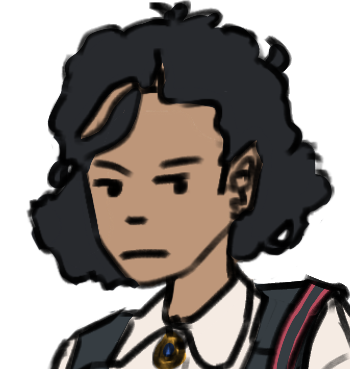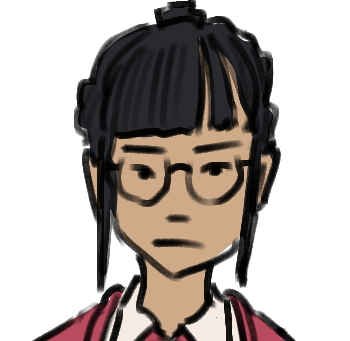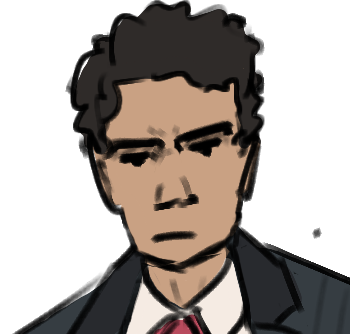NEW Story: Cocktail
How to Speak Vekllei

This article is not part of Vekllei canon. It may be old, obsolete or just a bit of fun.
✿ This article was featured in Issue #7 of the Atlantic Bulletin
For all you’ve seen of Vekllei and her characters, you’ve never heard a single one of them speak. This post marks a little exploration into the Vekllei language, and a ‘soft launch’ of my website, https://millmint.net. The proper launch will come at the end of the month.
This post will briefly discuss some elements shown in this infographic, but a large article on the language has been drafted here. If you have some interest in constructed language, and some of the more playful aspects of Vekllei’s evolving utopian communication systems, I encourage you to take a look at it. The website is incomplete, and both the articles on characters and Vekllei itself are very incomplete. Otherwise, a growing archive, essays, and issues of the Atlantic Bulletin are all available. Have a poke around, and let me know if anything breaks! The site has dark mode, if you’re a gamer. Just click the moon.
One Language, Many Parts #
To borrow from the article linked above, the Vekllei language has six core systems often referred to as sublanguages. They are as follows:
- Spoken Vekllei, which is everyday spoken language. It draws from two glossaries with different meanings and feelings, called Oa and Loh.
- Topet, which are logographic characters (occasionally characterised as hieroglyphs). Like other pictographic languages, Topet characters can be broken down into repeating components, called Topotte.
- Rapotenne, is the traditional logographic language of names. It is much older than Topet, and has more in common with spiritual runes than modern logography.
- Potenne, lit. “Hand-Talk”, is a sign language that incorporates gestures and signing to add meaning to emotion to spoken language, and occasionally in place of it.
- Upotenne, lit. “Spirit-Hand-Talk”, as the recreation of runes in human form, used limitedly in spiritual ritual.
- Vekllei Semaphore is the codification of colour and shape. Traditionally limited to colour, shape and pattern are now also included in Vekllei Semaphore, in which full sentences can be formed.
In This Picture #
We can see various parts of the Vekllei sublanguages on display, including Topet, Rapotenne, Potenne and Vekllei Semaphore. Before Cobian gets close enough to say hello, Tzipora has already delivered a devastating compliment via a simple three-finger tap to the palm, admiring how she looks. A couple of descriptions of Tzipora written in Topet have been annotated on her left, to demonstrate its use, including a tongue-twister (“She always tucks her shirt” becomes “Louisn Laismoh Loah Liousmineh”). You’ll notice Topet looks especially hieroglyphic, even by pictographic standards.
Tzipora’s full Blood Name is spelled out in Rapotenne below, which is markedly different from Topet in history, characters and grammar. Most formal names in Vekllei employ a seal in place of writing it out in full ornamentation, which has been provided below along with a formal signature. Her signature is entirely pictographic; elements are arranged according to symbolic value, rather than phonological legibility.
On the right, we can see an example of how Semaphore lives up to its name through its presence on flags, reinforcing and communicating information without conventional literacy. Also shown are a handful of basic symbols as they relate to authority, with the landscape of Vekllei superseding all human organs. Their colours matter, and so their meanings are more complex than what is described here – for example, a small black circle refers to a human being, but an orange one refers to an arctic person (usually Vekllei).
Finally, we have a breakdown of the word comiya (also looked at here), which means “friend.” Tzipora and Cobian are comiya, and Moise and Cobian are… sort of comiya. The introduction here of phonetic complements, which are duplicate consonant-pairs used to slightly alter the semantic meaning of a word without changing its pronunciation, allows the idea of a “friend” to be conceptualised in many different ways, to encompass all sorts of relationships. This one here implies a sort of naïve love (by using characters for late autumn, young woman and a glacial beach, all pronounced /k/.)
Limpettes are tails that underline vowel-forms called hieyerette to enhance legibility. Although ornamented Topet has visually distinct consonant-pairings, business Topet does not generally use superscript and so limpettes designate the vowel-form. If you’re a bit lost, that’s okay. It’s in the main article, and I don’t want to make this post too long.
You can imagine then, even with only a handful of examples of language in practice here, how complex Vekllei can become as phonological and semantic meaning compound, combine and seperate in different forms and contexts. The spoken word can be altered by the physical gesture, and the physical gesture can be altered by the written word.


